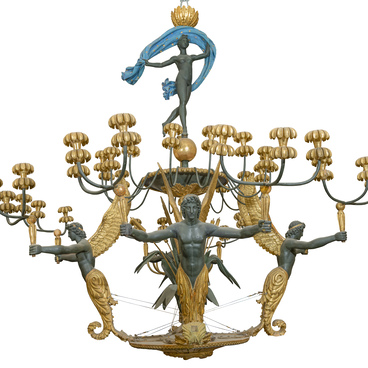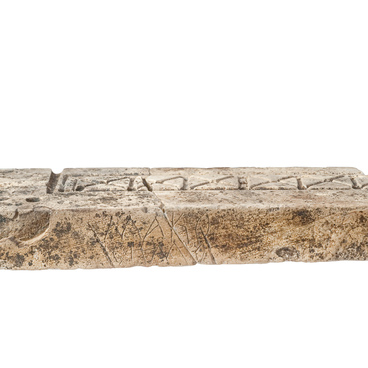On January 16, 1547, a solemn ceremony took place at the Assumption Cathedral in the Moscow Kremlin when 17-year-old Ivan IV, the Grand Duke of Moscow, was crowned tsar. At that time, it was believed that the monarch’s power was of divine origin, thus, Metropolitan of Moscow Macarius placed the crown upon his head. Macarius was the head of the church and Ivan’s spiritual mentor, who helped the young sovereign to solidify his power.
The climactic moment of the ceremony came when Macarius presented the royal regalia to Ivan IV: the life-giving cross, barmas (shoulder collar) and the Monomakh’s Cap, which was the crown traditionally worn by Russian Princes. The coronation of Ivan IV became an event of great political significance for Russia and cemented the tradition of tsarist autocracy. The formation of the Tsardom of Russia spoke to Russia’s independence, its economic and military power.
The coronation ceremony of Ivan IV is depicted in detail in the miniatures of the Tsar Book — the last part of the Face (Illustrated) Chronicle, which was the largest compilation of historical information ever assembled in medieval Russia dedicated to the events of Russian and world history. It was created especially for Ivan the Terrible in a single copy. The complete set includes ten volumes, in total they contain about ten thousand sheets of rag paper. The word “face” in the title means “illustrated”, that is, one where the text is supplemented with “faces”. It is illustrated with about 17 thousand miniatures. Some of the sheets have not survived to our time, and some pages were mixed up when the manuscript was rebound.
The Tsar Book is the final volume of the Face Chronicle. It was written and designed by masters of royal book-writing workshops, which were located in Moscow and Alexandrovskaya Sloboda — presently the modern city of Alexandrov, Vladimir Oblast.
This volume contains 1073 miniature illustrations of the text. In other books of the Face Chronicle, miniatures are mostly colored and made in a technique similar to watercolor painting. In the Tsar Book, the miniatures are black and white. Masters did not have time to paint them, and the work on the chronicle stopped.
The climactic moment of the ceremony came when Macarius presented the royal regalia to Ivan IV: the life-giving cross, barmas (shoulder collar) and the Monomakh’s Cap, which was the crown traditionally worn by Russian Princes. The coronation of Ivan IV became an event of great political significance for Russia and cemented the tradition of tsarist autocracy. The formation of the Tsardom of Russia spoke to Russia’s independence, its economic and military power.
The coronation ceremony of Ivan IV is depicted in detail in the miniatures of the Tsar Book — the last part of the Face (Illustrated) Chronicle, which was the largest compilation of historical information ever assembled in medieval Russia dedicated to the events of Russian and world history. It was created especially for Ivan the Terrible in a single copy. The complete set includes ten volumes, in total they contain about ten thousand sheets of rag paper. The word “face” in the title means “illustrated”, that is, one where the text is supplemented with “faces”. It is illustrated with about 17 thousand miniatures. Some of the sheets have not survived to our time, and some pages were mixed up when the manuscript was rebound.
The first three volumes of the Illustrated Chronicle include Biblical texts, as well as information about Byzantine, Greek, Roman and Eastern history up to the 10th century AD. In the following volumes, scribes outlined the main events of Russian history since 1114. Their historical narrative is subordinated to the idea of glorifying the Moscow dynasty and strengthening the autocratic power of the tsar. The Moscow state is represented as an heir to ancient monarchies and a stronghold of Orthodoxy.
The Tsar Book is the final volume of the Face Chronicle. It was written and designed by masters of royal book-writing workshops, which were located in Moscow and Alexandrovskaya Sloboda — presently the modern city of Alexandrov, Vladimir Oblast.
This volume contains 1073 miniature illustrations of the text. In other books of the Face Chronicle, miniatures are mostly colored and made in a technique similar to watercolor painting. In the Tsar Book, the miniatures are black and white. Masters did not have time to paint them, and the work on the chronicle stopped.



